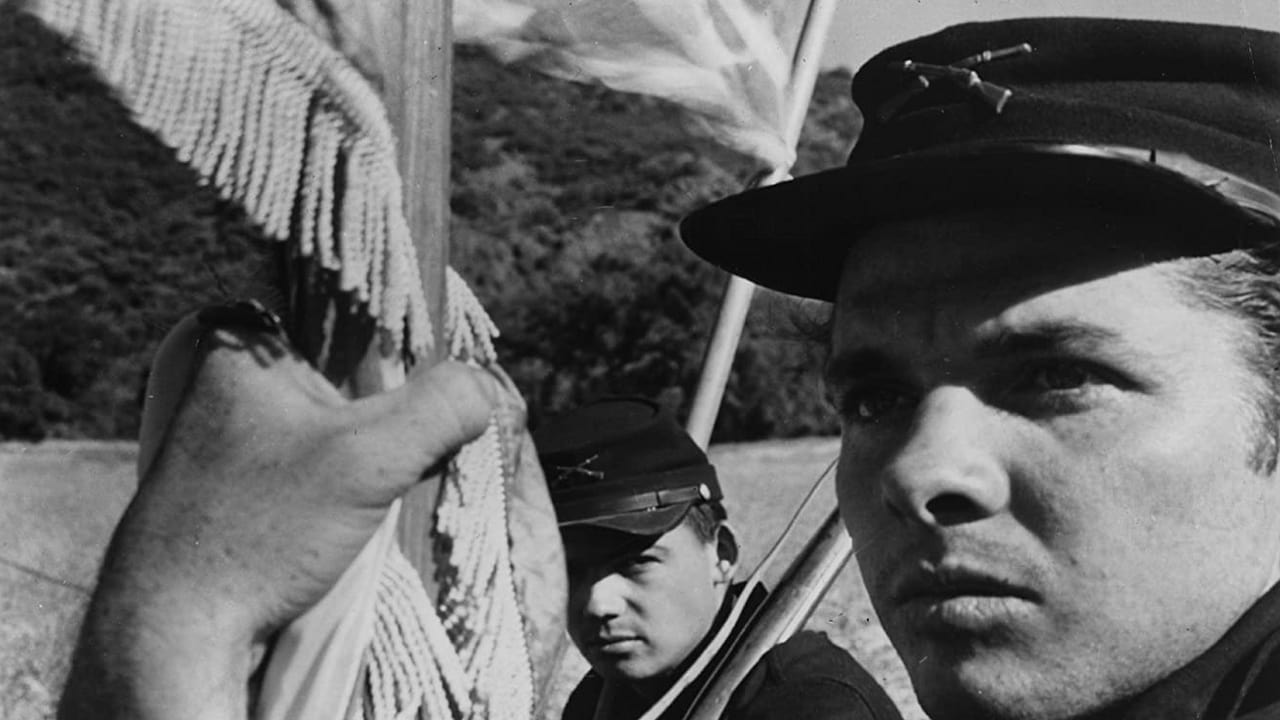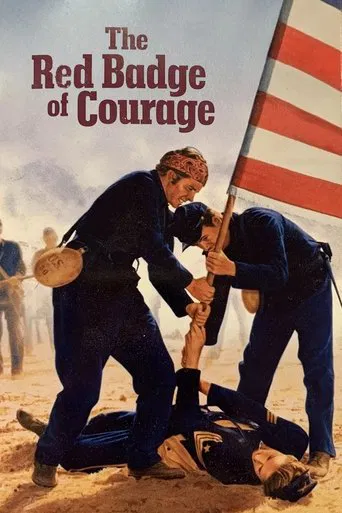

Best movie of this year hands down!
... View MoreThis is How Movies Should Be Made
... View Moreone of my absolute favorites!
... View MoreThis is a coming of age storyline that you've seen in one form or another for decades. It takes a truly unique voice to make yet another one worth watching.
... View MoreThe Red Badge of Courage is directed by John Huston who also co-adapts to screenplay with Albert Band from the novel of the same name written by Stephen Crane. It stars Audie Murphy, Bill Mauldin, Andy Devine, Robert Easton, Douglas Dick, Royal Dano, Arthur Hunnicutt and Tim Durant. Music is by Bronislau Kaper and cinematography by Harold Rosson. The American Civil War and Union soldiers head South to confront the Confederate army. Young Henry Fleming (Murphy) is ill prepared for the horrors of war, so when the crunch comes he retreats from the first battle he's faced with and has a life choice of either being known as a coward, or find something from within to make him strong enough to return to the front line. Nutshell History Of The Production. John Huston believed that this could have been his masterpiece, but an MGM power struggle saw the film butchered. A narration was insisted upon after poor test screenings, Huston washed his hands off the picture, while Lillian Ross produced a critically acclaimed book about the production. With no fanfare or bunting put out by the studio to promote the picture, the eventual 70 minute cut of the movie flopped as audiences didn't quite like the tonal flows of the piece. Over time, even in its truncated form of just under 70 minutes, pic has garnered praise to become something of a classic as it stands, while also being considered as a lost masterpiece due to the cut material apparently being lost forever. Beautifully photographed by Rosson, it's a film that has often been tagged as some sort of arty exercise. Yet it never once feels like it has ideas above its station, it quite simply is a very intimate and touching portrayal of Americans fighting Americans. It doesn't soft soap anything, deftly imbuing the narrative with the awfulness of the war and the effect on those wearing the uniforms. The period design is superb, the battle sequences crafted with great skill by Huston, and in Murphy the pic has a great fulcrum for youthful confusion acted with a skill that many still think he didn't have. Up close and personal, with raw emotional seeping from its pores, The Red Badge of Courage is a potent exercise in war film making. As Audie stands there at culmination of battle charge, holding in his hands the battered flags of both the Union and the Confederacy, the impact is quite something to behold. 8.5/10
... View MoreSuperb war film!A company of soldiers in the fore front of the American civil war are facing head-on combat battles with their enemy. One youthful soldier is terrified of his situation and the question is: how -if at all- will he handle his fears?Excellent atmospheric battle scenes. The viewer can taste and feel the blood and the dirt and the fear. Brilliant direction and camera work with a very intelligent script to match. Great in black and white but I wonder if this picture could be colorized. The cynical viewer might see in this movie lambs being manipulated and sent to the slaughter, but that said:More than 60 years old, why can't they make films like this nowadays???8/10
... View MoreCivil War film based on the famed novel by Stephen Crane. It gets short shrift among John Huston's films because it's well known that Louis B. Mayer cut 26 minutes out of the film while Huston was away filming The African Queen. Still, what's left is hardly incoherent and works beautifully. It may have been a masterpiece in its 95 minute incarnation, but it's still great and one of Huston's best films in its 69 minute form. Audie Murphy stars as a young private facing his first fighting. The real value of this film is how it really feels like it's right there on the front lines of Civil War battles. It's vivid and frightening, and also quite gorgeously directed and shot. I perhaps would have liked to hear no narration, which comes directly from Crane's novel (and may or may not have been wanted by Huston). It's mostly unnecessary. It may have been confusing without it, but only as confusing as it is for the characters on screen.
... View MoreRed Badge of Courage, The (1951) *** 1/2 (out of 4) Adaptation of Stephen Crane's novel has a Civil War soldier (Audie Murphy) running away from battle because he's scared but after wondering around for a bit he begins to become a man and prepares for his next battle. It's rather amazing to read about the history of this movie, which was pretty much a huge battle between director Huston and the studio. MGM would eventually take the film away from the director and cut a two-hour movie down to 69-minutes and with that in mind it's amazing at how well the film still holds up. I'm not sure what all was cut out but I'd love to see that version, which is apparently missing. That's a real shame considering both Huston and Murphy tried to buy the uncut version of the film back from the studio only to learn the additional footage had been thrown out. As for what's left, this is a very impressive little movie that I'm guessing was meant to show the fine line between being a hero and a coward and how circumstance can change a person. I thought the movie was extremely powerful in its message even though it never preaches or being over dramatic. The movie contains some wonderful battle scenes, which are among some of the best on ground footage since THE BIRTH OF A NATION. The battle scenes are certainly masterfully directed but so are the quieter scenes with the men marching and talking. Hearing them talk about various subjects including death was perfectly handled by the director. There's some terrific cinematography including a couple wonderful scenes showing the sun shining through some trees. Murphy gives a very strong performance as does the rest of the cast. Andy Devine has a small but important role in the film as well.
... View More